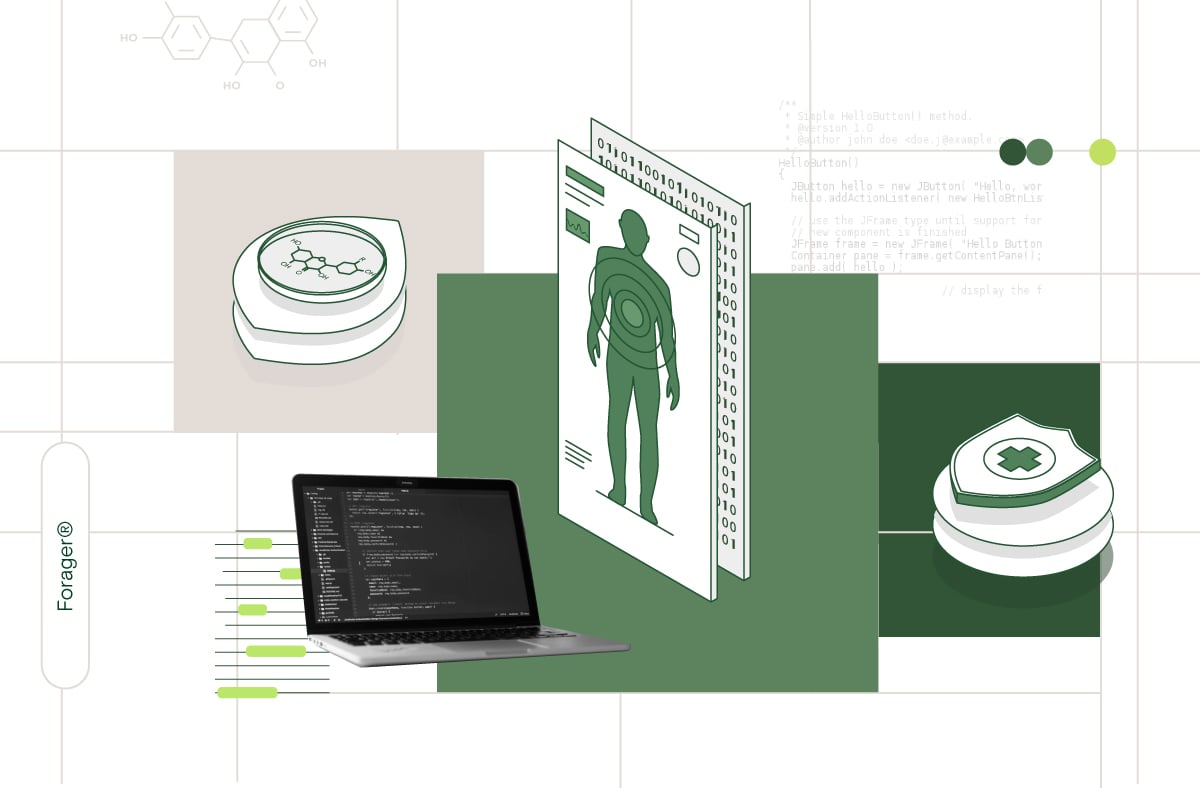December 20, 2022
Blog Post
Understanding Artificial Intelligence and Machine Learning

The foundation of Brightseed’s search for bioactives in nature is our A.I.-powered platform, Forager®.
Forager is an advanced platform that uses machine learning and artificial intelligence (A.I.) to make connections between bioactives and corresponding human receptors. These connections are the core of future health research, and bridging them is the next frontier in health and wellness research.
Brightseed deploys A.I. in two distinct phases: research and learning.
The research phase combines known scientific findings with computer code to build a sprawling database of plant compounds believed to activate a human receptor - referred to as bioactives. Some of this data is based on past research—for example, the mountain of existing data about known bioactives like lycopene in tomatoes with numerous attributions to cell protection, or antioxidants in blueberries, that are known to support inflammation. Establishing these connections helps the Forager understand the qualities and traits that make compounds impactful on humans and enables it to search for similar patterns between novel bioactives and the human body.
The learning phase tests the quality of these patterns. The technology asks whether these are strong causal links between plant compounds and human receptors, or whether they’re tenuous or merely coincidental. Answering this question traditionally takes scientists years, if not decades. But Forager can identify valuable findings quickly and incorporate the evidence into its base code to illuminate new places to look that have a high chance of strong results. In other words, the system learns what works and what doesn’t, and gets predictively better over time.
Time is the crucial factor behind A.I.—particularly how to save it and, at the same time, produce reliable results that can be quickly demonstrated and replicated. Speed is built on processing power and data. Both are constantly increasing, which can help smartly built A.I. systems grow exponentially.
Broad applications of A.I. are currently in use across the wider tech space. DeepMind, a company owned by Google-parent Alphabet, has used A.I. to correctly predict the shape of almost all known proteins, which offers new ways to understand and treat diseases like Alzheimer’s and cancer. The city of Chicago recently shared crime data with an A.I. model that predicted future shooting crimes accurately enough to help prevent them. Smart A.I. bots can help instantly restore old photos by learning—and then correctly guessing—what’s missing. And the most widespread application may be with autonomous vehicles: industry-leading Waymo uses data from traffic patterns and human behavior to help cars drive autonomously with minimal risk while avoiding external threats.
A.I. and learning technologies have proven especially powerful in health and wellness. In 2020, an A.I. system named AlphaFold 2 predicted how a protein unfolds based on its DNA sequence, allowing health researchers to study life’s building blocks at new breadth, detail, and accuracy. Several companies have introduced longevity drugs and homeopathic products based on machine-learning algorithms that successfully identified biomarkers of aging. We’ve seen ways doctors have used A.I. to quickly match patients with diseases like cancer and heart disease with clinical trials they qualify for—a process that often takes months or much longer, but in days.
Everywhere they’re used, A.I.-powered platforms can be works of art. But they’re also works-in-progress. Effective machine learning requires more than turning on a machine and letting it run. A.I. is not a tool to replace existing experimental research or trained medical professionals. But it can save substantial time by illuminating what scientists should research and how to design experiments with the best chances of leading to breakthroughs.
Naturally, we are still at the beginning of A.I.’s potential. We don’t know what breakthroughs and opportunities lie ahead because we simply can’t imagine them. But following the data and learning from the results are—and have always been—the foundations of science. We’re improving the tools, but not the tenants, of research, and following new questions to exciting new places.
